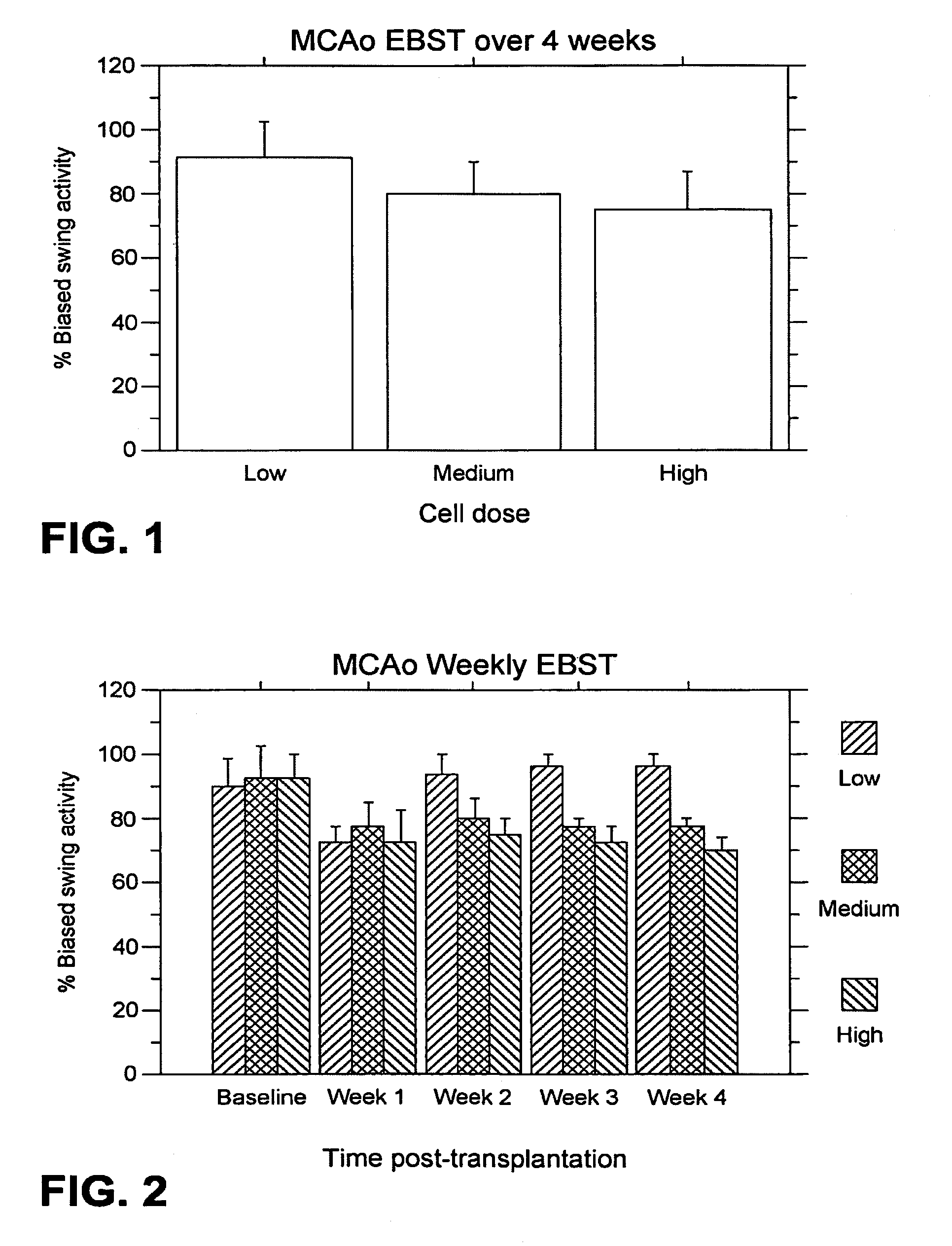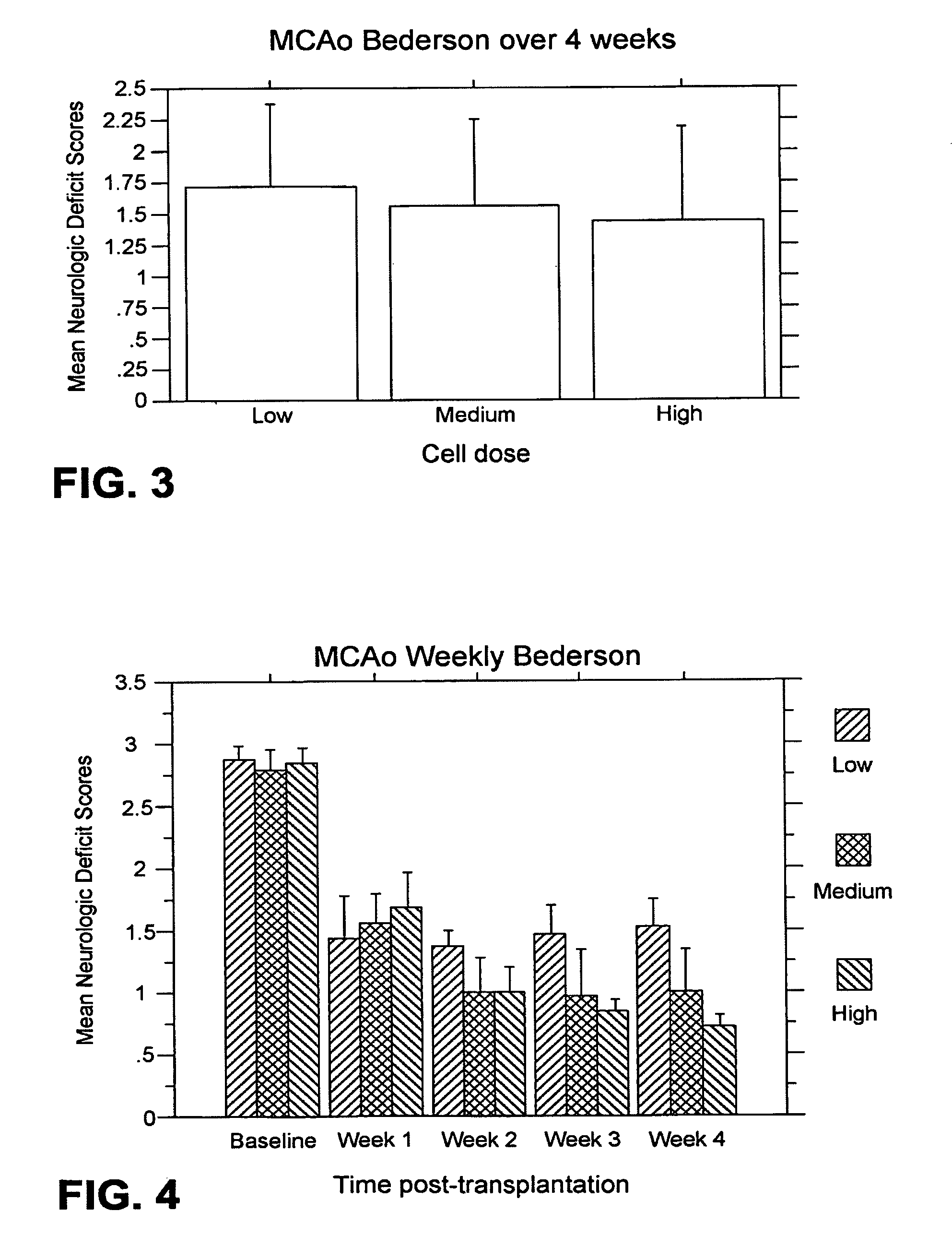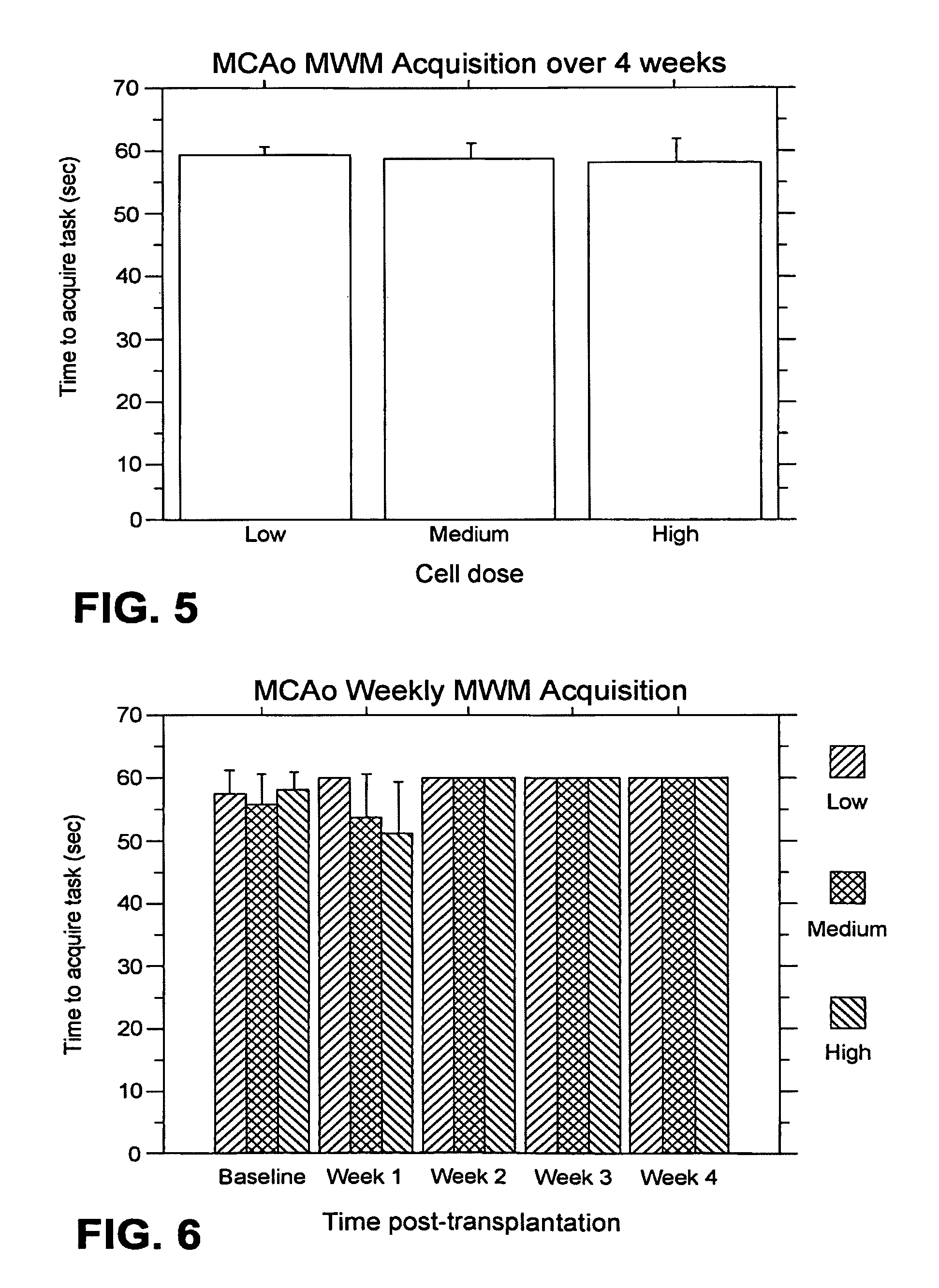Use of materials for treatment of central nervous system lesions
a technology of central nervous system and materials, applied in the field of stroke treatment, can solve the problems of corresponding loss of neurologic function, occlusion of vertebrobasilar arteries, and difficulty in detection of vertebrobasilar artery occlusions, and achieve the effect of facilitating patient functional recovery
- Summary
- Abstract
- Description
- Claims
- Application Information
AI Technical Summary
Benefits of technology
Problems solved by technology
Method used
Image
Examples
example 1
MCAo Results—Weekly for Four Weeks Post-Transplantation
[0188]The test animals underwent the MCAo procedure as described above, and were evaluated weekly for four weeks port-transplantation with the following results.
[0189]EBST: For the weekly testing over the four weeks post-transplantation, overall ANOVA revealed significant main treatment effects (F2,21=57.06, p100,000>40,000) were also observed (p's<0.01). The motor asymmetry was significantly reduced in each of the four weeks post-transplantation compared to baseline (p's<0.0001), with the most robust recovery seen at one week post-transplantation (p's<0.0001), and with stable recovery displayed for the subsequent three weeks post-transplantation. Posthoc tests revealed that the significant reduction in motor asymmetry at 1 week post-transplantation did not differ across the three cell doses, but dose-dependent effects were seen at 2, 3 and 4 weeks post-transplantation (p's<0.05) (FIG. 2).
[0190]Bederson test: For the weekly test...
example 2
MCAI Results—Weekly for Four Weeks Post-Transplantation
[0194]The test animals underwent the MCAI procedure as described above, and were evaluated weekly for four weeks post-transplantation with the following results.
[0195]EBST: For the weekly testing over the four weeks post-transplantation, overall ANOVA revealed significant main treatment effects (F2,24=76.30, p100,000>40,000) seen at 1 week post-transplantation (p's <0.05) (FIG. 12).
[0196]Bederson test: For the weekly testing over the four weeks post-transplantation, overall ANOVA revealed significant main treatment effects (F2,24=3.65, p0.005). Posthoc tests revealed that the highest dose of 200,000 cells produced better recovery than the low dose 40,000 cells at 3 and 4 weeks (p's0.05) (FIG. 14).
[0197]MWM Acquisition: For the weekly testing over the four weeks post-transplantation, overall ANOVA revealed no significant main treatment effects (F2,24=5.78-16, p>0.05) (FIG. 15). There appears to be a trend towards longer MWM acqui...
example 3
TGI Results—Weekly for Four Weeks Post-Transplantation
[0200]The test animals underwent the TGI procedure as described above, and were evaluated weekly for four weeks port-transplantation with the following results.
[0201]Bederson test: For the weekly testing over the four weeks post-transplantation, overall ANOVA revealed significant main treatment effects (F2,23=47.33, p100,000>40,000) were seen at 4 weeks post-transplantation (p's<0.05) (FIG. 22).
[0202]MWM Acquisition: For the weekly testing over the four weeks post-transplantation, overall ANOVA revealed significant main treatment effects (F2,23=9.88, p<0.001) (FIG. 23). However, this significant treatment effect was achieved only because the highest dose of 200,000 cells produced a transient significant improvement in acquiring the task at 1 week post-transplantation compared to the two other doses of 100,000 and 40,000 cells (p's<0.005). Thereafter, longer acquisition times at 2, 3 and 4 weeks post-transplantation compared to ba...
PUM
 Login to View More
Login to View More Abstract
Description
Claims
Application Information
 Login to View More
Login to View More - R&D
- Intellectual Property
- Life Sciences
- Materials
- Tech Scout
- Unparalleled Data Quality
- Higher Quality Content
- 60% Fewer Hallucinations
Browse by: Latest US Patents, China's latest patents, Technical Efficacy Thesaurus, Application Domain, Technology Topic, Popular Technical Reports.
© 2025 PatSnap. All rights reserved.Legal|Privacy policy|Modern Slavery Act Transparency Statement|Sitemap|About US| Contact US: help@patsnap.com



